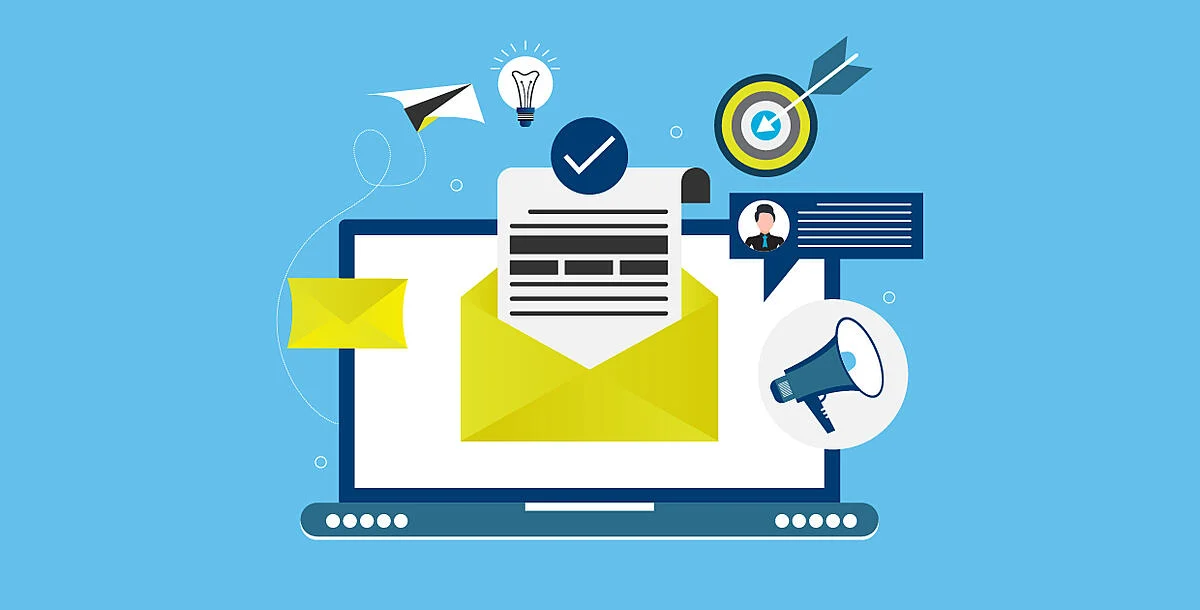Marketing automation is the use of software to automate actions such as sending emails, updating lead statuses and lifecycle stages, sending internal notifications, creating sales deals, and more. It doesn’t just improve efficiency, but can also provide a more personalized experience for customers to – nurturing every lead to its fullest potential.
The goal of marketing automation and how you nurture every lead is vast and varied. Here are some of the potential goals marketing automation can help with.
- Collect lead preferences
- Drive traffic to content
- Encourage free trial users to log in
- Build trust between the lead and your brand
- Educate leads
- Increase conversions
- Improve close rate
- Increase revenue
- Increase average order value
Once you have decided what goal your automation is trying to accomplish – now it’s time to strategize the best way to make it happen. With any marketing automation, there is both a trigger and an action.
Triggers
A trigger is an event or condition that lets the automation know it’s time to start.
Examples of triggers include:
- Subscribe to your email list
- Add an item to their cart
- Sign up for a free trial
- Request a product demo or meeting time
- Page views
- Contact or deal properties
- Email actions
- Calls-to action
- Ad interactions
- Event engagement
Actions
An action is the event that the trigger sets in motion.
Examples of actions include:
- Sending an email
- Adding a lead to a new drip sequence
- Sending an SMS
- Updating your CRM
- Sending a push notification
- Creating an in-app message
- Adding the lead to a direct mail list
Let’s put these in context. These are all basic ideas of marketing automations you could do.
Free Trial Automation
Trigger: Someone starts a free trial
Action: Send an email with a calendar scheduling link so that the lead can schedule a meeting to talk with someone.
Product Demo Automation
Trigger: Someone finishes a product demo.
Action: Start an email sequence with more resources like performance data, customer testimonials, and case studies to close the sale.
SMS Subscription Automation
Trigger: Someone subscribes to your SMS list.
Action: Use A/B testing to text a percent or dollar amount discount to see which results in more first-time sales.
Introductory Discount Automation
Trigger: An introductory discount is about to expire
Action: Send a text message reminding the lead of the urgency.
Abandoned Cart Automation
Trigger: Someone abandons a cart.
Action: Send them a text with a link to the abandoned cart item to make finishing the purchase easy.
Lead Gen Form Automation
Trigger: Someone fills out a lead gen form.
Action: Email them some introductory content and a link to schedule a meeting.
Marketing Automation Lead Nurturing Examples
Now that you have a grasp on what marketing automations can do – let’s take a look at some real world examples.
Welcome
Welcome messaging usually comes in the form of welcome emails or text messages. Likely the most common form of marketing automation, the welcome email is the bread and butter automation for any seasoned marketer. It can be used to introduce your brand, offer next steps, or just say thank you.
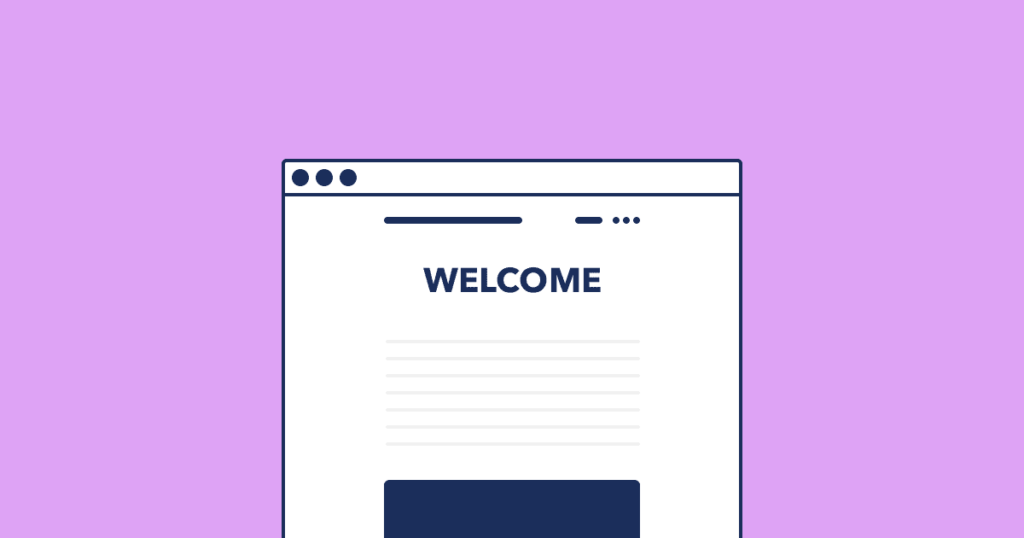
When someone joins your email list or fills out a form, use that momentum to encourage further exploration. Welcome emails should give direction on what the customer can do next and give them an easy way to take those next steps. Don’t go overboard with trying to sell products in the welcome email but including some popular, engaging or educational content in the welcome email is good practice.
A welcome email can also be a great place to try to learn more about a new user. Including a some sort form fill or survey with a welcome email is recommended.
Social Proof (Customer Reviews)
One of the most effective ways that you can build trust between customers and your brand is showing other customers who had great experience working with your brand. This will usually come in the form of a small review snippet from Google reviews or Facebook but producing content like case studies for exceptional clients could be good to help promote your brand through social proof as well. Let’s look at an example of using social proof to promote your brand through a marketing email from Paula’s Choice.
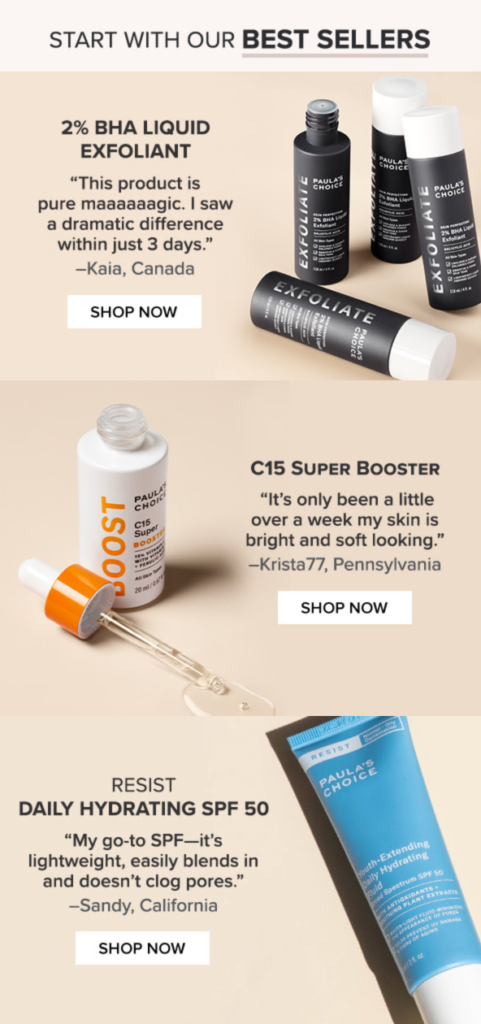
In this example, the people at Paula’s choice included their best selling products along with reviews associated with them. If you have an automation set up to gather information about your customer, you can go further and include products specially designed for that customer instead.
Discounts
Giving new leads a discount is a common strategy to boost first-time purchases. The intent is that the deal helps convince them to buy, and then the quality or experience brings them back for a second (full-price) purchase.
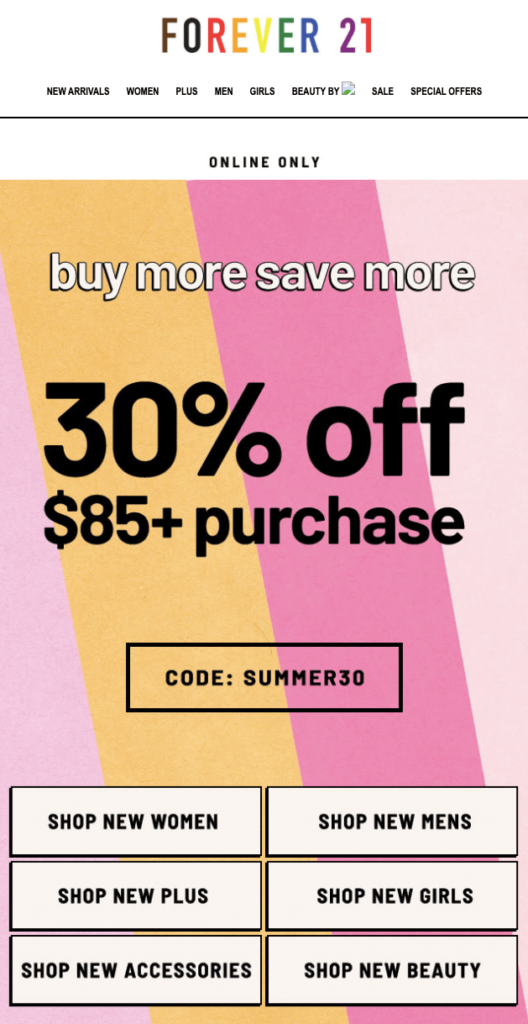
If you want to go above and beyond a simple discount, you can do something like adding a personalized brand quiz to the discount email. This provides an interactive experience that helps the customer decide what to buy—and gives the company a heads up on what types of products that customer likes. In this case, the automation would be for when a new user visits a certain number of pages to show them a discount pop-up.
Product Education
Education matters if leads are beginning to use your product—maybe they’re on a free trial or you have a freemium service. Teaching potential customers how to use your product and highlighting use cases can help them recognize the value and potential.
Since your product likely has more than one feature, you can send new leads an entire series of emails with marketing automation until they take your desired action. The messages can highlight top features, share customer success stories, and branch off, depending on which links they click on in previous emails.
Think about what a potential customer needs to know to succeed with your product or service. Use that to create touchpoints for each of those moments. Repurposing existing content can make it quicker to get your first version of a drip email sequence up and running.
Learn about the Customer
Using automated pre-purchase messages to learn about leads allows you to stow away information to leverage later. Let’s look at this example from a hair products brand who segments by hair color.
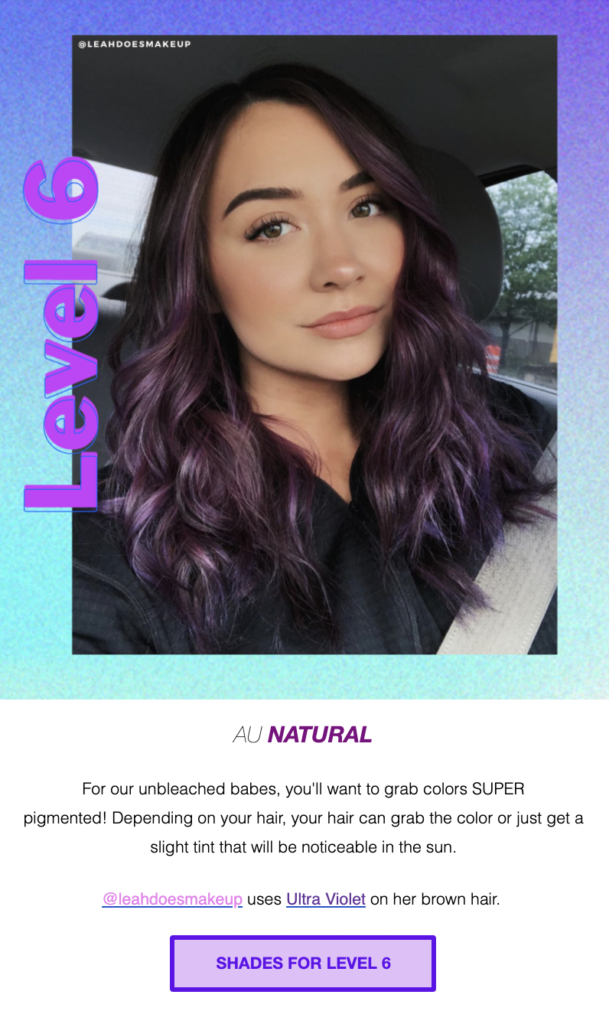
The email showed real customers with different base hair colors, along with a CTA to explore customized products. The company could note which CTA was clicked to put me into a customer segment based on the user’s current hair color.
Using a lead nurture email to lay out a buffet of options with triggered links has many benefits. You get to show off products to potential customers as well as learn what they’re interested in—that’s information you can use to send targeted messages in the future. Most consumers appreciate personalization as long as it’s based on information they’ve given you, so go ahead and ask for their preferences.
Abandoned Cart
Sometimes a potential customer comes close to completing a sale, only to abandon their cart at the last second. But keep in mind, just because someone doesn’t buy immediately doesn’t mean they never will. This means it’s worthwhile to send a reminder to convert more lookers to buyers.
If a user adds an item to the cart but does not purchase the item the same or next day, you could trigger an SMS text message reminding the customer of the awesome product they left behind.
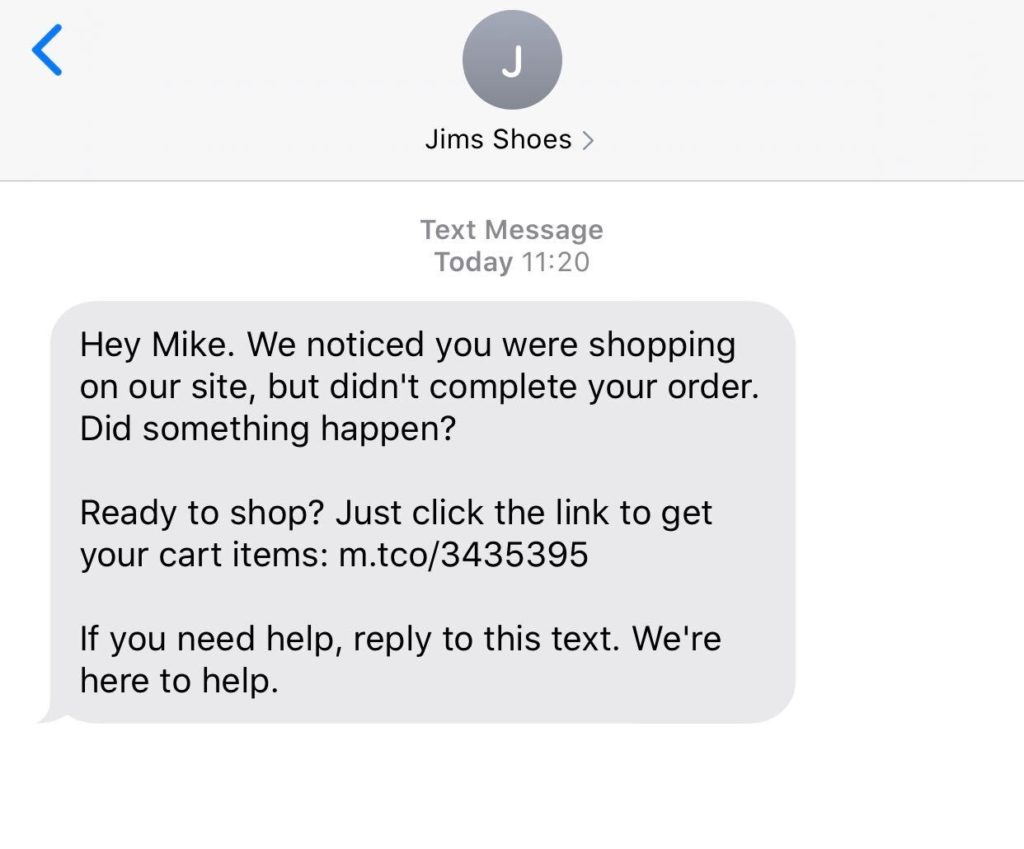
If you send an abandoned cart message, make it as easy as possible to keep shopping. It can also be nice when a brand references which items you’ve left behind. You could also send social proof about the item or even a discount to make the offer more enticing.
Get Started with Marketing Automation
At MINDSCAPE, we recommend using a CRM to set up all your marketing automation needs. We personally recommend HubSpot and have experts that can help you set it up.
Yeah, we do that.




